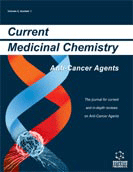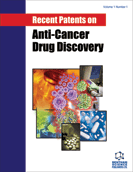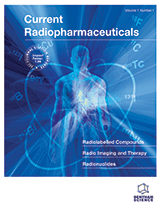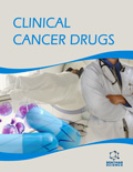Abstract
Taxanes represent the most important class of antitumor agents introduced in cancer therapy in the last decade. The first member of the family was paclitaxel, firstly isolated from Taxus Brevifolia and found active as antitumor agent at the end of 60s. In the mid of 90s, a semi-synthetic taxane derived from 10-deacetylbaccatin III was introduced and thereafter named as docetaxel. Taxanes act by inhibiting microtubule dynamics, thereby inducing the arrest in M phase and the consequent activation of the apoptotic program. Since target of taxanes is not directly the genome, they are effective alone or in combination with DNA-damaging drugs in tumors not responding to conventional chemotherapeutics, such as advanced breast and non small cell lung cancer. In this review we will cover the aspects of clinical applications of the currently used taxanes as well as the clinical problems related to their use. Taking into consideration such problems, new taxanes have been developed in order to extend the spectrum of taxane-sensitive tumors and several of them are currently undergoing clinical trials. Among these agents, a newly developed taxane (BAY 59- 8862) appears particularly interesting for the fact that it shows excellent oral bioavailability and activity in tumors with inherent resistance to paclitaxel.
Keywords: taxanes, drug resistance, dna damaging drugs
Current Medicinal Chemistry - Anti-Cancer Agents
Title: Second Generation Taxanes: from the Natural Framework to the Challenge of Drug Resistance
Volume: 3 Issue: 2
Author(s): Cristiano Ferlini, Iwao Ojima, Mariagrazia Distefano, Daniela Gallo, Antonella Riva, Paolo Morazzoni, Ezio Bombardelli, Salvatore Mancuso and Giovanni Scambia
Affiliation:
Keywords: taxanes, drug resistance, dna damaging drugs
Abstract: Taxanes represent the most important class of antitumor agents introduced in cancer therapy in the last decade. The first member of the family was paclitaxel, firstly isolated from Taxus Brevifolia and found active as antitumor agent at the end of 60s. In the mid of 90s, a semi-synthetic taxane derived from 10-deacetylbaccatin III was introduced and thereafter named as docetaxel. Taxanes act by inhibiting microtubule dynamics, thereby inducing the arrest in M phase and the consequent activation of the apoptotic program. Since target of taxanes is not directly the genome, they are effective alone or in combination with DNA-damaging drugs in tumors not responding to conventional chemotherapeutics, such as advanced breast and non small cell lung cancer. In this review we will cover the aspects of clinical applications of the currently used taxanes as well as the clinical problems related to their use. Taking into consideration such problems, new taxanes have been developed in order to extend the spectrum of taxane-sensitive tumors and several of them are currently undergoing clinical trials. Among these agents, a newly developed taxane (BAY 59- 8862) appears particularly interesting for the fact that it shows excellent oral bioavailability and activity in tumors with inherent resistance to paclitaxel.
Export Options
About this article
Cite this article as:
Ferlini Cristiano, Ojima Iwao, Distefano Mariagrazia, Gallo Daniela, Riva Antonella, Morazzoni Paolo, Bombardelli Ezio, Mancuso Salvatore and Scambia Giovanni, Second Generation Taxanes: from the Natural Framework to the Challenge of Drug Resistance, Current Medicinal Chemistry - Anti-Cancer Agents 2003; 3 (2) . https://dx.doi.org/10.2174/1568011033353489
| DOI https://dx.doi.org/10.2174/1568011033353489 |
Print ISSN 1568-0118 |
| Publisher Name Bentham Science Publisher |
Online ISSN 1875-5968 |
 1
1Related Articles
-
Guanine Content of MicroRNAs is Associated with their Tumor- Suppressive and Oncogenic Roles in Lung and Breast Cancers
MicroRNA Neuroblastoma and Stem Cell Therapy: An Updated Review
CNS & Neurological Disorders - Drug Targets The Role of Fibroblast Growth Factors in Tumor Growth
Current Cancer Drug Targets Angiopoietin-2 Axis Inhibitors: Current Status and Future Considerations for Cancer Therapy
Current Angiogenesis (Discontinued) Emerging Therapeutic Agents for Cervical Cancer
Recent Patents on Anti-Cancer Drug Discovery Cutting the Limits of Aminobisphosphonates: New Strategies for the Potentiation of their Anti-Tumour Effects
Current Cancer Drug Targets Probing Gallic Acid for Its Broad Spectrum Applications
Mini-Reviews in Medicinal Chemistry OPLS-DA as a Suitable Method for Selecting a Set of Gene Transcripts Discriminating RAS- and PTPN11-Mutated Cells in Acute Lymphoblastic Leukaemia
Combinatorial Chemistry & High Throughput Screening Identification of Genes Associated with Lung Adenocarcinoma Prognosis
Combinatorial Chemistry & High Throughput Screening The use of Azoles Containing Natural Products in Cancer Prevention and Treatment: An Overview
Anti-Cancer Agents in Medicinal Chemistry Experimental Therapy for Lung Cancer: Umbilical Cord-Derived Mesenchymal Stem Cell-Mediated Interleukin-24 Delivery
Current Cancer Drug Targets The Life and Death of Protein Kinase C
Current Drug Targets Therapeutic Approaches for the Treatment of Epidermal Growth Factor Receptor Mutated Lung Cancer
Current Cancer Drug Targets Recent Patents for Predictive and Prognostic Biomarkers in Non-Small-Cell Lung Cancer
Recent Patents on Biomarkers Somatostatin and Octreotide on the Treatment of Acute Pancreatitis - Basic and Clinical Studies for Three Decades
Current Pharmaceutical Design Simultaneous Separation and Identification of the Diastereoisomers of Epipodophyllotoxin and its Esters by Liquid Chromatography – Diode Array Detection and – Electrospray Ionization Mass Spectrometry
Current Pharmaceutical Analysis Use of Insulin and Insulin Analogs and Risk of Cancer — Systematic Review and Meta-Analysis of Observational Studies
Current Drug Safety Exhaustive Review on Lung Cancers: Novel Technologies
Current Medical Imaging CD26/Dipeptidyl Peptidase IV as a Novel Therapeutic Target for Cancer and Immune Disorders
Mini-Reviews in Medicinal Chemistry Thalidomide as an Antiangiogenic Drug in the Treatment of Multiple Myeloma
Letters in Drug Design & Discovery


















